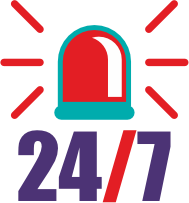Categories
Can Periodic Breathing Be Treated? Use the Clock & Colour Rule
Sep 23, 2025
What’s next: The rule, why the pattern happens, normal
versus not, home steps, preterm notes, and what a doctor may check.
The
Clock & Colour Rule
You need a simple
way to decide.
Time the pause and look at your baby’s colour.
Under 10 seconds and pink is usually normal. Near 20 seconds or
blue/grey lips needs a call. This rule turns a scary pattern into a clear
plan.
Why
babies do this pattern
Breathing control
is still maturing.
Small swings in carbon dioxide can briefly
pause breathing, then trigger several catch-up breaths. The rhythm looks odd
but the baby stays comfortable and pink. Most babies outgrow this between 4
and 6 months as the brain’s control settles.
Normal
versus not: checkpoints you can trust
Start with the
rule, then use these checks to confirm your next step.
·
Usually normal
o Pauses under 10 seconds.
o No chest pulling in, no grunting, no flaring
of the nostrils.
o Baby stays pink and settles back to sleep.
o Feeding and waking periods are normal for
age.
·
Call your pediatrician today
o Pauses around 20 seconds or repeated
clusters in one nap.
o Lips or tongue look blue or grey.
o Ribs pull in or the belly heaves to breathe.
o Very sleepy and hard to wake, poor feeding,
or fever in a baby under 3 months.
·
Emergency now
o The baby does not breathe, turns blue, or
does not respond to gentle stimulation.
Home
steps that make breathing easier
You cannot
“treat” periodic breathing with medicine, but you can remove things that make
breathing harder.
·
Safe sleep: place your baby on the back on a firm, flat surface. No pillows
or soft toys.
·
Clear the nose: if stuffy, use 2–3 saline drops in each nostril, wait 60
seconds, then one brief gentle suction per side.
·
Clean air: no smoke, incense, or strong sprays where the baby sleeps.
·
Comfortable room: slightly cool room, light layers; overheating can make the pattern look
worse.
·
Watch, don’t poke: observe quietly and use a clock. A short phone video helps your doctor
understand what you saw.
Preterm
babies: what is different
Preterm infants
show the pattern more often and for longer.
Your NICU team may have used caffeine or
monitors in hospital. At home the same rule applies: clock and colour. Call
earlier if you are unsure. Most preterm babies improve as they reach their corrected
age of term plus a few weeks.
What
your doctor may check
Good care starts
with your description.
Expect questions about sleep position, colour
changes, feeding, and any cold at home. The doctor may check oxygen levels,
listen to the chest, and look for a blocked nose. If needed, they may test for
infection, anaemia, reflux, or watch your baby on a monitor for a short time.
Home gadgets are rarely needed unless your clinician prescribes them.











